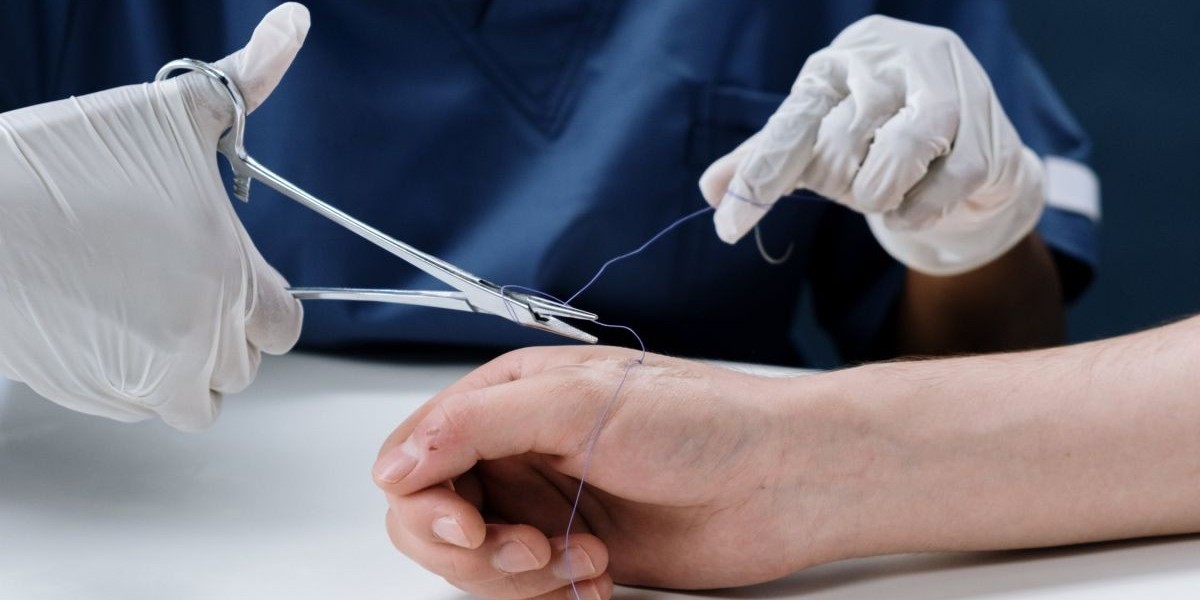When it comes to injuries, one of the most common questions people ask is, "Can Urgent Care Do Stitches?" It's important to know when and where to seek care, especially for cuts and lacerations that might need stitches. Understanding the capabilities of urgent care centers and how they differ from emergency rooms can help you make informed decisions about where to go for treatment. This article will explore the role of urgent care centers in treating cuts, how to determine if stitches are necessary, and when you should seek medical attention.
1. What is Urgent Care?
Urgent care centers are healthcare facilities designed to provide immediate, non-emergency medical treatment for conditions that require prompt attention but are not life-threatening. They are typically equipped to handle a variety of issues such as minor injuries, illnesses, infections, and diagnostic testing. Urgent care centers are often more accessible and less expensive than emergency rooms, making them a popular choice for individuals seeking treatment for injuries that don’t require emergency intervention.
While urgent care centers can handle a wide range of medical issues, including cuts, abrasions, and minor burns, they are not equipped for serious trauma, complex surgeries, or life-threatening conditions. For severe injuries or life-threatening situations, an emergency room is the better choice.
2. Can Urgent Care Do Stitches?
Yes, urgent care centers can perform stitches, also known as suturing, for minor to moderate cuts and lacerations. They are well-equipped to handle a variety of wound care procedures, including cleaning, stitching, and bandaging. However, not all cuts are suitable for urgent care treatment. If the injury is severe or located in a particularly sensitive area, like the face or joints, you might be referred to a specialist or an emergency room for more advanced care.
The ability of urgent care centers to perform stitches is one of the reasons they are so useful for treating common injuries. Many minor cuts or lacerations can be treated effectively and quickly, saving you time and money compared to visiting a hospital emergency room.
3. When is Stitches Necessary?
Not all cuts and lacerations require stitches. However, there are several key factors that determine whether a wound needs stitches. Generally, stitches are required when:
The Cut is Deep: If the wound is deep enough that it exposes underlying tissues such as muscle, fat, or bone, stitches are likely necessary to promote healing and prevent infection.
The Wound is Large: Larger cuts that are several centimeters long may require stitches to help the wound close properly and heal without complications.
The Edges are Far Apart: If the edges of the wound are not aligned and are far apart, stitches can help bring them together to speed up the healing process and reduce scarring.
Heavy Bleeding: If the bleeding does not stop after applying pressure for a few minutes, it may indicate that the cut is more serious and needs professional treatment.
The Wound is on a High-Movement Area: Wounds located near joints or areas with frequent movement, like the hands or feet, may benefit from stitches to prevent the wound from reopening.
4. What Happens When You Get Stitches at Urgent Care?
If you visit an urgent care center for a wound that requires stitches, the healthcare provider will first clean the wound thoroughly to reduce the risk of infection. They may use a sterile solution to irrigate the wound and remove any debris. Depending on the location and severity of the injury, the provider might numb the area with a local anesthetic to ensure that you are comfortable during the procedure.
Once the area is numbed and cleaned, the healthcare provider will carefully stitch the wound together using medical sutures. After the stitches are in place, the wound will be dressed with a bandage or gauze, and you will be given instructions for proper aftercare. This may include keeping the area clean and dry, applying antibiotic ointment, and watching for signs of infection such as redness, swelling, or pus.
Stitches placed at urgent care centers are typically used for injuries that can heal with minimal scarring and are unlikely to cause complications. In more complex or specialized cases, such as deep wounds or injuries requiring cosmetic repair (e.g., facial lacerations), the healthcare provider may refer you to a plastic surgeon or an emergency room.
5. When Should You Go to the Emergency Room Instead?
While urgent care centers are equipped to handle many injuries, there are times when you should go to an emergency room instead. Here are a few situations where an emergency room is a better choice:
Severe Bleeding or Large Wounds: If the bleeding is uncontrollable or the wound is too large or deep, the emergency room may be better equipped to handle the situation. Large, deep wounds may require specialized surgical techniques or more extensive care.
Signs of Infection: If you have a wound that looks infected—redness, swelling, warmth, or pus—a healthcare provider at an emergency room may need to administer stronger antibiotics or perform more extensive wound care.
Wounds to Sensitive Areas: Cuts to sensitive areas such as the face, eyes, or genitals may require specialized care to minimize scarring and ensure proper healing. An emergency room or a specialist may be better suited for these types of injuries.
Head Injuries or Concussions: If your injury is to the head, especially if you lose consciousness, feel dizzy, or experience a headache, you should go to an emergency room for evaluation. Urgent care centers can handle minor cuts on the scalp, but for serious head trauma, a hospital is the safer option.
Fractures or Bone Exposure: If your injury involves a broken bone or if bone is exposed, urgent care centers may not have the resources to treat the injury properly, and you should go directly to an emergency room.
6. Other Considerations for Wound Care
Even if your wound doesn’t require stitches, it’s important to care for it properly to prevent infection and promote healing. Here are some general tips for taking care of a minor cut or scrape:
Clean the Wound: Use clean water and mild soap to rinse the wound, and apply a disinfectant or antibiotic ointment to reduce the risk of infection.
Stop the Bleeding: Apply gentle pressure with a clean cloth or bandage to stop any bleeding. If the bleeding doesn’t stop after 10 minutes of applying pressure, seek medical attention.
Cover the Wound: Protect the wound with a clean bandage or gauze, and change the dressing regularly, especially if it becomes wet or soiled.
Watch for Signs of Infection: If the wound becomes red, swollen, warm to the touch, or oozes pus, it could be infected, and you should see a healthcare provider.
Avoid Using the Injured Area: If the wound is on a joint or an area that moves frequently, try to limit movement to allow the wound to heal properly and avoid reopening.
7. How to Prevent Future Injuries
While accidents happen, taking steps to prevent injuries in the future can help reduce your risk of needing stitches. Here are some tips:
Wear Protective Gear: When engaging in physical activities, especially those involving tools, sports, or construction, wear the appropriate protective gear, such as gloves, helmets, and pads.
Be Cautious with Sharp Objects: Handle knives, scissors, and other sharp objects carefully to avoid cuts.
Maintain a Safe Environment: Keep walkways clear, clean up spills promptly, and remove hazards that could cause slips, trips, and falls.
Conclusion
When it comes to injuries requiring stitches, knowing the capabilities of urgent care centers is essential for making the right decision. Can urgent care do stitches? Yes, they can, but it’s important to recognize when your injury requires more advanced care. For minor to moderate cuts and lacerations, urgent care centers are a convenient, affordable, and effective option. However, for more severe injuries or complications, seeking care at an emergency room is crucial. By understanding when and where to seek medical treatment, you can ensure that you receive the appropriate care and get back on the road to recovery as quickly as possible. Visit Health Dady to get more information.










